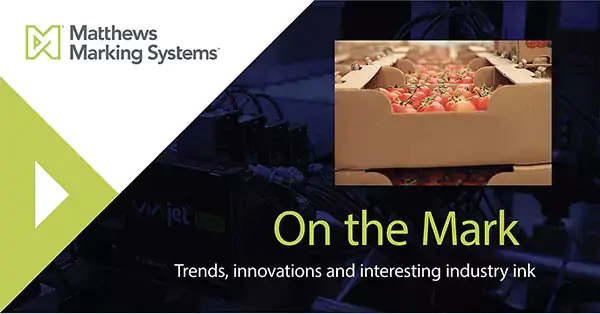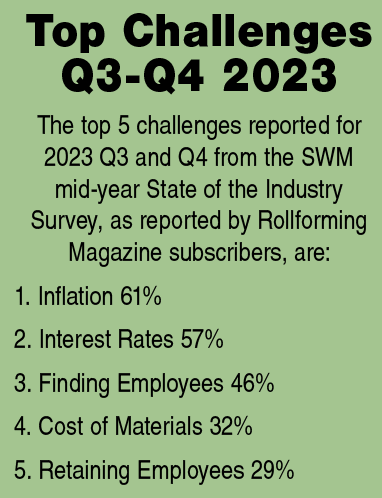Catching up on interesting news and innovations in production, packaging and more

Will tech and automation replace humans in manufacturing? Nope. The right combination is key.
Labor shortages are having a significant impact on operations at every level, wreaking havoc on the entire supply chain. In 2021, more than 47 million workers quit their jobs in the U.S. and the instability of the labor market continues. Automation and artificial intelligence (AI) technologies are helping to mitigate the impact, but will they ever replace the roles of humans in the manufacturing landscape? Not in the near future, according to a recent report.
Technologies like digital supply chain solutions can boost efficiency, but there will always be roles and tasks that require human creativity, judgment, problem-solving skills, and human-centered decision-making for hiring, managing, and retaining a good workforce.
“The optimal solution is a combination of talented people relying on dependable, modern, and solutions-focused software platforms.”
Source: Manufacturing.net.
On the Mark: A great example of this is in how marking and coding systems are controlled. When labor is scarce, relying on multiple people to set up and manage multiple different printers and vision systems means existing workers have even more to do. It creates worker stress and a higher risk of workers making errors that could ultimately disrupt production and the supply chain. Using a centralized print controller like MPERIA enables one person to efficiently manage all the printers and vision systems on the line. And integration with ERP and other back end systems ensures your marking and coding operations are enhancing your supply chain velocity.
Food safety preparedness: “Think like a pathogen”
An interview with food safety expert Trevor Suslow in Produce Processing sheds light on food safety concerns and what food producers can do to help reduce the chances of microbes getting into the food supply. The Center for Produce Safety (CPS) has played a huge role in providing essential research and bringing together government, public health, academia and industry to “shape a different type of research mission – one that emphasized problem-solving, solution-driven, applied-answer research across the supply chain.”
How should a producer take in all of that research and put it into practice? “Get in there and think like the pathogens,” Suslow says. “Look beyond the superficial stereotypes about their behavior. Learn how they adapt, how they survive and what makes them die.”
He advises leaders to empower and develop the skill base of their food safety professionals to watch for red flags and to tap into CPS’ network to support the development of best practices.
Source: ProduceProcessing.net.
On the Mark: Even with the best precautions in place, sometimes the tiniest pathogen can wreak havoc on the entire supply chain when it prompts a recall. This where the industry-led Produce Traceability Initiative (PTI) comes in. The success of PTI depends on having high-quality, durable marks on every bag, case or carton that leaves a facility. That means reliable labels that don’t fall off; dates, lots, and barcodes that don’t smear and are easily readable; and, ideally, marking equipment that is ready to make the shift to 2D barcodes that provide a great deal more information to support efficient track and trace coding in the event of a recall.
Rolling with the economy, the sectors of the metal industry experiencing growth
Look at any architectural design magazine and you’ll see the growing use of metal in roofing, siding and other areas in contemporary homes and business buildings. And it isn’t just a style statement.
“We see a lot more people using metal on their buildings. They are thinking long-term on the materials they use to build,” Wayne Troyer of Acu-Form told Rollforming Magazine in a recent article about the state of the industry leading into the last quarter of the year.

The anticipated slowdown in building due to higher interest rates isn’t hitting in all areas, and the commercial and industrial construction market is still robust, especially in manufacturing. For the most part, the upward interest rate adjustments have not had a huge impact on business. Still, business should continue to diversify and look for new markets in case conditions change.
Chandler Barden, President of Cidan Machinery, offers his advice for navigating the current rollforming market: “Invest in your business to build a platform for scale and growth, otherwise the ramp-up time for these projects can put you in a position where you are chasing your competitor.”
Source: Rollforming Magazine.
On the Mark: As companies in the metal industry invest in upgrading their equipment, it’s critical to include marking systems in that mix. Reliable, clean marks – delivered with high speed and accuracy by durable drop-on-demand inkjet printers – reduce waste and help help minimize maintenance costs while ensuring that all those metal products heading out to construction sites have clear, crisp branding and coding.
Want to Make Your Mark?
What captured your attention in the news recently?
We want to share news that is important to our readers. Submit an industry news article that you found thought-provoking to [email protected], and we’ll consider adding it to an upcoming issue of On the Mark!
